We headed towards the car ferry to the lighthouse area but had second thoughts as the rain got heavier. So we then decided to go to Waterford city, to do the things I has missed yesterday.
At Waterford Crystal we had to wait about 15 minutes for the tour
. We used the time to look around the shop area. There were some lovely pieces for thousands of Euros –although we would have saved a lot in tax. There was one cheaper item that appealed a bit but I have time to think about it. We both liked a vase with a spider on it and some of the modern cuts.
The Crystal centre had only been opened for 2 months so the tours are relatively new. The company went into receivership a couple of years ago so we did not expect to see the firm in operation. It appears that they have reopened with a clear tourism focus and this appears to be working. The tours run every 20 minutes and there were about 30 in our group.
We were first in a display room, the focus of which was a crystal clock. It incorporates the clock made by a Waterford clockmaker in the 18th century. They also had a display explaining the new technique of forming the stem of glasses as part of the process rather than 'sticking' the bowl on to a preformed stem
.
Another part gave a brief history of the firm, from when it was set up in 1783. Crystal production in Ireland did not incur the luxury tax imposed in England which helped its growth. Although the company won many awards it closed in 1851 because it was unprofitable. In 1947 the firm restarted with 1 boss (escaping communism), 1 worker (in Ireland for work experience) and 1 cutting machine. The worker stayed for the rest of his life as the head of design.
The tour took us through the factory, starting at the glass blowing part. We were told that the apprenticeship is 5 years and then 3 more years to be a master glass blower. We saw the wooden moulds that are used for unique pieces and saw how blackened the used ones are. The glass is 1300 degrees Celsius when it is first worked so no wonder.
There were a few people working in this area, first getting the heated crystal, working it into the ‘rough shape’ then putting it into a steel mould (used for the regular pieces) and blowing it to the correct size and shape
. Vases were being made when we did our tour
We saw them removed and then put into a kiln to cool slowly while water cooled the steel moulds. I knew already that the crystal has to cool in a kiln as it would shatter if left in room temperature because it would cool too quickly (because of a Dick Francis book I read).
In the next area the ‘overflow’ crystal was cut from the top of the vases using a diamond tipped machine then the vases were checked for flaws. These would include air bubbles, being too thick or too thin. Less than perfect shapes would be broken and added to the cut off tops. This is then ground fine, melted and it can then be used again. Waterford does not sell seconds!
We next saw the vases being marked into sections to help the cutters produce an even design. They were marked with a felt pen both vertically and horizontally. The vases then went to the cutters who also train for 8 years in which time they have to memorise all the designs. The marks give the cutter starting and finishing points. The cuts have to be the correct depth and are also made using a diamond tipped wheel.
This room also had 2 automatic cutters which we were told were used for some cuts that would be too hard for a person to do, usually because of the size of the item. These would still be checked by a master cutter, who would also complete the design
. We were invited to hold one of these large pieces but the comment that we would have to pay for it if it was dropped was enough to put me off.
All this work had been done on blown crystal. The next section was sculptured crystal and it also takes 8 years to become a master craftsperson. We saw a number of pieces made in this way and then went on to the etching area which was the last technique that was explained. Again we saw a range of pieces and one craftsman working. In here there was a wonderful piece that a man had done in his own time after the collapse of the Twin Towers. Since then he has made a similar piece which is in Manhattan.
We were told that many special pieces are here because the firm makes 2 in case the one being shipped is damaged. There was also a crystal version of the Waterford coat of arms, which used blown and cut, sculptured and etched crystal in its design as a showpiece of the company’s skills.
The final process is the polishing
. This is done by immersing the crystal in an acid bath for an hour. The effect is amazing as this removes a white film after cutting as well as any remaining marks.
It was still wet when we finished but umbrellas kept us dry as we walked to the Waterford Museum of Treasures. This covered the history of the city and was set out in time order, with an audio guide to supplement printed information. There is evidence of stone age farmers in the area 6000 years ago and a number of bronze age artifacts. A small town we visited later in the day, Woodstown, was the site of silver processing in the 9th century and smelting equipment and silver ingots from the time were on display. Silver came from as far away as Iraq.
The main displays started with the founding of Waterford in 914. It had retained its original Viking name of Port Lainge, the port of the thighs. The settlement formed a triangle with a river on one side, a marsh on the second and they built an earth bank and ditch on the third
. The Vikings moored their long ships here. By 1000 many Vikings actually lived permanently in the area and were Christian.
The Waterford view of the next period was slightly different to that we heard in New Ross. The displays told us that Dermott McMurrough was unwelcome in Ireland so went to Aquitane to see Henry II and returned with Norman help in 1169. On the way he enlisted the help of Strongbow, the Earl of Pembroke, from Wales who arrived in Ireland in 1170. Dermott had promised Strongbow lands in Waterford but in fact these were under Viking control so were not his to give away. However, the city was lost to the Normans in a bloody battle and the previous Viking leaders were taken to Reginald’s tower and put to the sword. So Waterford was now under Norman rule.
Henry II made John Lord of Ireland and he visited the city twice. It was given a mint, authority to have an annual fair and a lot of power was given to local merchants
. There was royal authority for the city to have a monopoly on wine imports to Ireland and also all wool and hide exports. New Ross tried to fight this so all the city’s charters were made into a roll and presented to the King. To flatter him, it was illustrated with images of English Kings as well as Irish governors and a view of the city. It succeeded. The roll is on display under glass as it is Ireland’s most important medieval decorated manuscript.
In 1349 the plague spread and hit mainly the Anglo Normans in the crowded towns, killing about one third. The effect was to increase the power of the native Irish especially as trade across Europe declined markedly. The city of Waterford even went into debt but it was loyal to the English so the debt was cancelled. The mayor of the day, James Rice, managed to have the city declared an individual city state, under English law but not obliged to follow these laws unless they were also laws in Ireland.
This area had three other special items. One was ‘The Great Parchment Book’, from 1361-1650. It is the first recorded use of English in Ireland for official purposes. Nearby there were some valuable church vestments from the 15th century. The third was a cannon used in an attack in1495. It is not cast but made of iron staves bound with hops, like a cooper makes a barrel. The notes said it is the origin of the term a barrel of a gun
.
The second floor covered the time from Henry VIII, more in themes rather than in time order. It mentioned that William Wise was one of Henry’s 8 squires at the Cloth of Gold tournament and he was later a mayor of Waterford. Henry got rid of the title Lord of Ireland and took the title of King of Ireland himself. However he also gave Waterford a lot of power partly because of his close ties to William Wise. He also gave the monasteries he dissolved to Gaelic Irish and English gentry to gain their loyalty.
There was a section relating to Oliver Cromwell. In 1649, Waterford was the only town not defeated by Cromwell. Unfortunately his men returned in 1650 and took revenge by burning the city. The cathedral was stripped of all its treasures and turned into a barracks.
The section about the church contained a lot of silver pieces donated to various churches, particularly Catholic
. Many Catholics left Ireland during the time when they were excluded from Parliament and city councils and in fact had no right to vote. Waterford was one of the more tolerant cities and Catholics were admitted as freemen and allowed to trade. Waterford revived and there were 2 cathedrals built in the city at about the same time, notable because both were designed by the same Protestant architect. The Church of Ireland cathedral has a porch with great columns and a 200 ft tower and spire. The Roman Catholic cathedral is more ornate and a testimony to the wealth of the local catholic community.
There was a section covering the history of glass in Waterford. It said there was a glassworks in the area in 1589 but mainly concentrated on the Waterford Crystal history. It did tell us that the seahorse was the symbol of the firm which I should have realised but hadn’t. That is why there were a lot of seahorse items for sale. By then we were in information overload so the final part about recent political history went rather over our heads. However, we did discover who Thomas Francis Meagher was. We had seen his large statue and noted the surname (Lorraine Meagher used to teach at NCG) although his surname had a different pronunciation (‘Marr’).
Thomas Meagher had been a noted advocate for the repeal of the Act of Union of 1798, to give Ireland what became known as Home Rule. When he also advocated armed action he became known as ‘Meagher of the Sword’
. For this he was sentenced to death but it was commuted to transportation to Tasmania. He escaped from there to the USA and ended up fighting on the Union side in the Civil War.
We had soup in the café below then walked back to the car. At that stage we decided to go to Hook Lighthouse after all as the weather seemed a bit better. The trip took us to Passage East, from where we took the car ferry across to the Hook Peninsula (a 4 minute trip which saves a 50 minute drive). The ferry runs continuously and payment is made on board once the ferry is underway to speed the turnaround. At 12 euro for the return trip it was not cheap but clearly many people think it is well worth it.
Visiting the Hook peninsula had been recommended, not just for the lighthouse. We stopped at Templetown for a cache. Templetown received it's name from the Knights Templar, a brotherhood of monastic warriors originating during the crusades in the Holy Land
. Henry II of England swore to provide for 200 Templars after the murder of St. Thomas a Beckett - and in 1172 gave away wide stretches of Ireland to fulfil this promise. Basically the whole southern end of the Hook Peninsula was given to the order. Today only a few remains of their church in Templetown are visible since the Templars were arrested on (mainly) trumped-up charges in 1307. Only the name Templetown and a few ruins remain.
There is a nearby Crooke Head hence the origin of the saying ‘by hook or by crook’.
The lighthouse certainly dominates the end of the peninsula and the sea definitely looks threatening. We were told that spray sometimes reaches the top on stormy days and on fine days you can see for miles. It was in between so we decided not to pay to go in as we would get neither the views nor the drama and already knew a bit about the history. It was built by the Earl of Penbrow (‘Strongbow’) so is over 800 years old. We walked around outside and used the wifi to upload a few blogs while having afternoon tea
. Some blue sky had started to appear and it had stopped raining.
We then drove to Tintern Abbey but arrived with only 45 minutes to visit so decided to leave it for another trip. We returned on the ferry and found a few more caches on our way to Dunmore East. One cache took us to Woodstown (the former Viking town) and its beach which was the nicest we have seen in our travels. The sun being out also helped.
We found a hotel for tea that was on Nuala’s recommended list. It also had wifi so we could send a few emails and check the news, although we couldn’t add pictures to the blog. We then went home to feed the fox (who didn’t take the food which is a worry), write the blog, watch TV (a very interesting programme about the financial crisis 2 years ago) and plan the next few days. The forecast is a little better so we think we will go to the West Coast for a couple of nights.
By Hook or by Crooke
Monday, September 06, 2010
 Ballymacaw, County Waterford, Ireland
Ballymacaw, County Waterford, Ireland
Other Entries
-
95The Black Adderrrr....
Aug 2116 days prior Brampford Speke, United Kingdomphoto_camera7videocam 0comment 0
Brampford Speke, United Kingdomphoto_camera7videocam 0comment 0 -
96Visiting the rellies in Kents Caves
Aug 2215 days prior Brampford Speke, United Kingdomphoto_camera12videocam 0comment 0
Brampford Speke, United Kingdomphoto_camera12videocam 0comment 0 -
97Moor travels
Aug 2314 days prior Brampford Speke, United Kingdomphoto_camera14videocam 0comment 0
Brampford Speke, United Kingdomphoto_camera14videocam 0comment 0 -
98Motoring to Bealieu
Aug 2413 days prior Chichester, United Kingdomphoto_camera10videocam 0comment 1
Chichester, United Kingdomphoto_camera10videocam 0comment 1 -
991066 and all that
Aug 2512 days prior Chichester, United Kingdomphoto_camera3videocam 0comment 0
Chichester, United Kingdomphoto_camera3videocam 0comment 0 -
100Catching up with Chalky and Pam
Aug 2611 days prior Chichester, United Kingdomphoto_camera16videocam 0comment 0
Chichester, United Kingdomphoto_camera16videocam 0comment 0 -
101Visiting Leeds Castle
Aug 2710 days prior Chichester, United Kingdomphoto_camera10videocam 0comment 0
Chichester, United Kingdomphoto_camera10videocam 0comment 0 -
102Chichester to Winchester to London
Aug 289 days prior London, United Kingdomphoto_camera26videocam 0comment 0
London, United Kingdomphoto_camera26videocam 0comment 0 -
103Fast cars, a Palace and treacle
Aug 298 days prior London, United Kingdomphoto_camera6videocam 0comment 0
London, United Kingdomphoto_camera6videocam 0comment 0 -
104Cruising down the River
Aug 307 days prior London, United Kingdomphoto_camera11videocam 0comment 0
London, United Kingdomphoto_camera11videocam 0comment 0 -
105There'll be blue birds over......
Aug 316 days prior London, United Kingdomphoto_camera22videocam 0comment 0
London, United Kingdomphoto_camera22videocam 0comment 0 -
106To Ireland begorrah...
Sep 015 days prior Ballymacaw, Irelandphoto_camera2videocam 0comment 0
Ballymacaw, Irelandphoto_camera2videocam 0comment 0 -
107A fox on the run
Sep 024 days prior Ballymacaw, Irelandphoto_camera3videocam 0comment 0
Ballymacaw, Irelandphoto_camera3videocam 0comment 0 -
108Cuisin' the Copper Coast
Sep 033 days prior Ballymacaw, Irelandphoto_camera6videocam 0comment 0
Ballymacaw, Irelandphoto_camera6videocam 0comment 0 -
109Quick note to everyone re earthquake
Sep 042 days prior Ballymacaw, Irelandphoto_camera0videocam 0comment 1
Ballymacaw, Irelandphoto_camera0videocam 0comment 1 -
110A shaky start
Sep 042 days prior Ballymacaw, Irelandphoto_camera6videocam 0comment 0
Ballymacaw, Irelandphoto_camera6videocam 0comment 0 -
111From Famine ships to hurling
Sep 051 day prior Ballymacaw, Irelandphoto_camera4videocam 0comment 0
Ballymacaw, Irelandphoto_camera4videocam 0comment 0 -
112By Hook or by Crooke
Sep 06 Ballymacaw, Irelandphoto_camera14videocam 0comment 0
Ballymacaw, Irelandphoto_camera14videocam 0comment 0 -
113It's a long way...
Sep 071 day later Ballymacaw, Irelandphoto_camera17videocam 0comment 0
Ballymacaw, Irelandphoto_camera17videocam 0comment 0 -
114Wandering about Wexford
Sep 082 days later Ballymacaw, Irelandphoto_camera15videocam 0comment 0
Ballymacaw, Irelandphoto_camera15videocam 0comment 0 -
115The Rain of Kerry
Sep 093 days later Ballymacaw, Irelandphoto_camera5videocam 0comment 0
Ballymacaw, Irelandphoto_camera5videocam 0comment 0 -
116Nothin' much doin'
Sep 104 days later Ballymacaw, Irelandphoto_camera3videocam 0comment 0
Ballymacaw, Irelandphoto_camera3videocam 0comment 0 -
117A load of Blarney
Sep 115 days later Ballymacaw, Irelandphoto_camera15videocam 0comment 0
Ballymacaw, Irelandphoto_camera15videocam 0comment 0 -
118The products of Waterford
Sep 126 days later Ballymacaw, Irelandphoto_camera13videocam 0comment 0
Ballymacaw, Irelandphoto_camera13videocam 0comment 0 -
119Doin' Dublin
Sep 137 days later Ballymacaw, Irelandphoto_camera14videocam 0comment 1
Ballymacaw, Irelandphoto_camera14videocam 0comment 1 -
120Old fossils in Kilkenny
Sep 148 days later Ballymacaw, Irelandphoto_camera17videocam 0comment 0
Ballymacaw, Irelandphoto_camera17videocam 0comment 0 -
121Ciao Ballymacaw
Sep 159 days later Rome, Italyphoto_camera2videocam 0comment 0
Rome, Italyphoto_camera2videocam 0comment 0 -
122Cheers Bros
Sep 1610 days later Rome, Italyphoto_camera12videocam 0comment 0
Rome, Italyphoto_camera12videocam 0comment 0 -
123Roamin' Rome
Sep 1711 days later Rome, Italyphoto_camera8videocam 0comment 0
Rome, Italyphoto_camera8videocam 0comment 0 -
124All aboard please!!
Sep 1812 days later Civitavecchia, Italyphoto_camera8videocam 0comment 0
Civitavecchia, Italyphoto_camera8videocam 0comment 0 -
125Birthday on the Med
Sep 1913 days later Livorno, Italyphoto_camera38videocam 0comment 0
Livorno, Italyphoto_camera38videocam 0comment 0 -
126A lucky break at Monte Carlo...
Sep 2014 days later Monte-Carlo, Monacophoto_camera34videocam 0comment 3
Monte-Carlo, Monacophoto_camera34videocam 0comment 3 -
127The rain in Spain...
Sep 2115 days later Barcelona, Spain and Canary Islandsphoto_camera22videocam 0comment 0
Barcelona, Spain and Canary Islandsphoto_camera22videocam 0comment 0 -
128Getting into Gaudi
Sep 2216 days later Barcelona, Spain and Canary Islandsphoto_camera6videocam 0comment 0
Barcelona, Spain and Canary Islandsphoto_camera6videocam 0comment 0 -
129Meandering through Mallorca
Sep 2317 days later Mallorca, Spain and Canary Islandsphoto_camera5videocam 0comment 0
Mallorca, Spain and Canary Islandsphoto_camera5videocam 0comment 0 -
130A lazy day at sea
Sep 2418 days later Palma de Mallorca, Spain and Canary Islandsphoto_camera0videocam 0comment 0
Palma de Mallorca, Spain and Canary Islandsphoto_camera0videocam 0comment 0

 Ballymacaw, County Waterford, Ireland
Ballymacaw, County Waterford, Ireland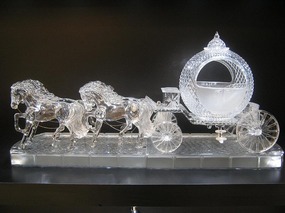
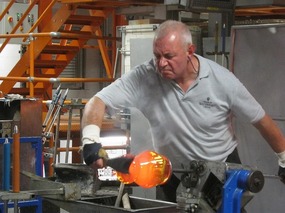
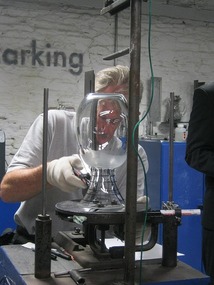
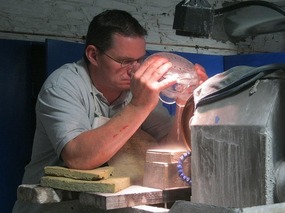
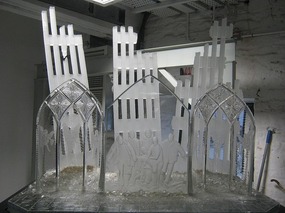
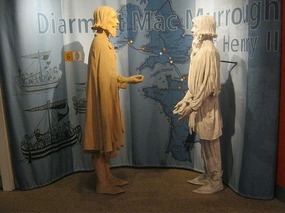

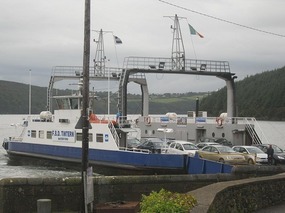
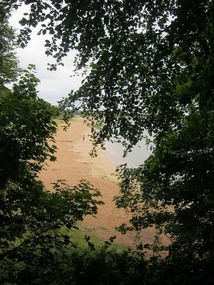
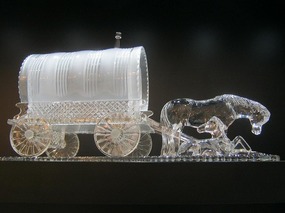
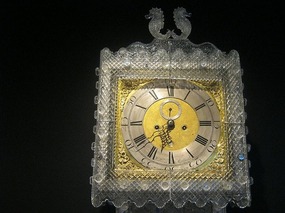
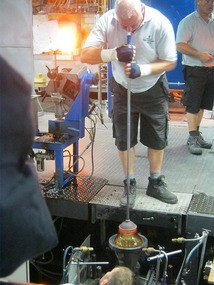





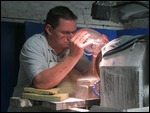
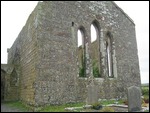
2025-05-22